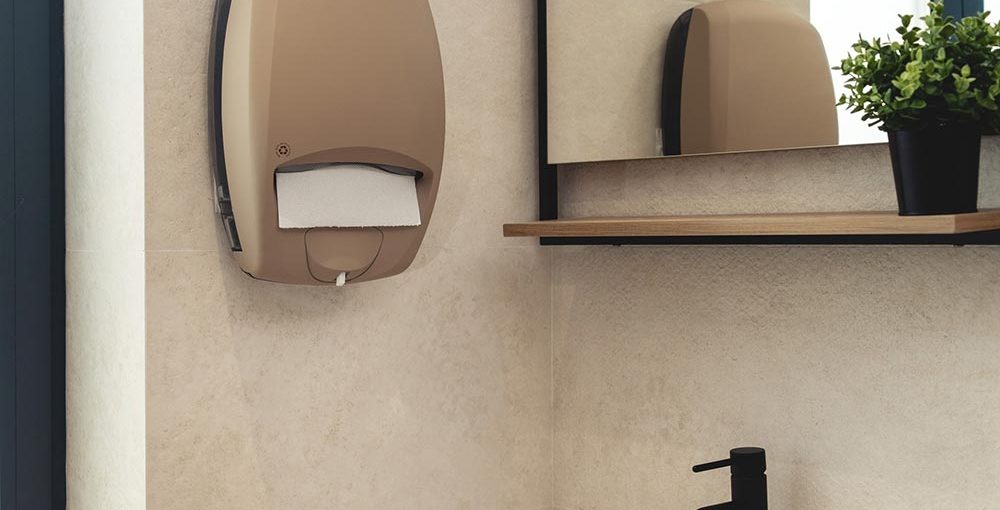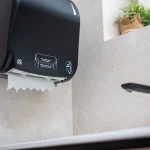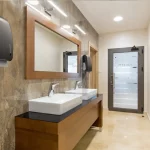The dispenser is the point where you can see whether the system is running or stalling. In facilities with constant footfall (hotels, offices, shopping centres, clinics, hospitality) it practically sets the pace; a single “hiccup” cuts the workflow, builds a queue, lowers the impression, and creates extra work for maintenance.
A breakdown that happens once every few months can be bad luck. But when the same dispenser starts “asking for attention”, jams, drips, needs a second sensor attempt, leaves traces—users notice it, and staff lose time on small interventions that are never planned yet are always “now and immediately”.
Below you will learn how to put an end, in one step, to those micro-stoppages and switch to a dispenser that operates unobtrusively, every time, without closing the restroom.
Related topics: Dispenser – A step-by-step guide to the perfect choice
If a second opinion helps, we are available for a quick assessment and a few concrete steps. +381 66 811 83 82
Dispenser – How to recognise a pattern and when to move to replacement
Before you change anything, the point is to distinguish a fluke from a pattern. A fluke is that lone “hiccup” that does not return. You recognise a pattern by the rhythm: the same symptom—jamming, dripping, a sensor that delivers a dose only on the second attempt—appears in two shifts in a row or several times in the same week. That is a sign that temporary “calming” no longer holds; the fault returns faster than service can remove it and starts embedding itself in your everyday routine.
The second thing is impact. If a single symptom causes a stoppage longer than 60–90 seconds or forces an urgent refill right at the peak, that is not just a technical trifle; it is a disruption of workflow at the most sensitive time, visible to both the user and the team.
The third is spread across the zone—when the problem “travels” between nearby points, for example both restrooms on the same floor or several stations where work is done with gloves, it is less often a matter of one device’s “luck” and more often of capacity or dosing that are not aligned with real throughput. As soon as two of these three things line up, we stop looking for excuses and prepare a replacement plan.
Related topics: How office and open space dispensers turn chaos into order
Luu +381 66 811 83 82 – a brief point review, confirmation of the cause and a proposal: what we change, what we adjust and when we do it so the shift does not stop.
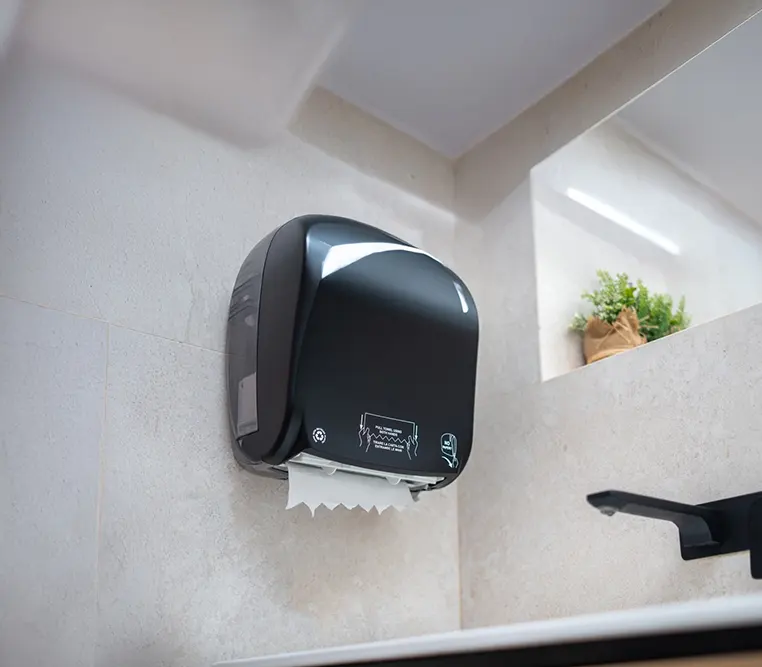
Dispenser – Choosing the next model
Once you know replacement makes sense, the rest is to choose a dispenser that truly follows your space.
Instead of leafing through catalogues blindly, go through five practical decisions: how you want it to dose soap, which paper system the zone requires, how to align the device with real working conditions (by zone), which housing fits the interior, and how many variants you release into everyday use. This short filter narrows the choice of dispensers to what matters in practice and brings measurable savings in consumption, service time and maintenance errors.
1) Dispenser dosing
Electronic dispenser for liquid soap (sensor).
Touch-free, fast and predictable—ideal for clean, fast approaches and public zones with constant flow. Stable operation and simple servicing mean fewer stoppages; with a properly set dose you get clean hands without waste. The advantages are a consistent dose and shorter usage time.
Electronic dispenser for foam soap (sensor).
It delivers a pre-aerated dose and therefore uses about ⅓ less soap for the same feeling of cleanliness. Foam evaporates faster, leaves a “softer” impression and raises the perception of standard—an excellent choice for representative and high-traffic points. It brings direct savings in litres and less frequent refills without any drop in quality.
Mechanical dispenser (liquid or foam).
A solution for “rougher” conditions, working in gloves, and zones with moisture or vibration. Simple mechanics provide a stable flow, and variants are available for both liquid and foam soap. The advantages are lower service costs and resilience to conditions.
Dispenser spray with atomiser for disinfection.
It forms a thin, even film—works best at entrances, passageways and points with short dwell time. A precise dose reduces waste and maintains the movement rhythm. It is practical as a complement to standard hand hygiene in buildings with high throughput.
2) Paper, systems as needed
Dispenser for toilet paper.
In busy cubicles, a jumbo roll performs most reliably. One large roll “pushes” through the peak, refilling is planned before the crest, and empty cores become rare (saving maintenance time and reducing stoppages). When neatness and precise consumption are the priority, sheets give exactly as much as needed without unwinding (dose control reduces waste). Where paper is also used for quick wipes or one-handed use is needed, centre-pull speeds up use and reduces touches (faster user turnover, less cleaning).
Dispenser for paper towels.
For most restroom zones, interfold towels give the best balance of neatness and control—each user takes one sheet (fewer paper “feathers” = less waste). In extremely high throughput, autocut always delivers the same measured sheet and has demonstrably reduced waste (typically 25–35% less scrap in practice). In kitchens, service corridors and wetter points, centre-pull for hands allows you to grab paper in a single move (faster flow + fewer contact marks).
3) Alignment by zone (working conditions)
The dispenser must follow the zone and the flow, not the other way round. In clean, fast approaches such as lobbies, rooms, halls and clinics, an electronic (sensor) dispenser without touch performs best—fast and visually tidy because there are no traces around the housing. Here you want a clearly visible reserve indicator so refilling does not fall into the peak, and you keep service in an “open–insert–close” mode so staff immediately return to the rhythm.
In “rough” zones (services, kitchen back-of-house, warehouses, production) a mechanical dispenser has the advantage. Mechanics provide a more stable flow and simpler maintenance, so micro-stoppages are reduced to a minimum.
In wet or splashing zones (spa, pools, sanitary surfaces) the key is a closed dispenser system with good sealing. This prevents dripping, reduces slippery spots, keeps the smell neutral, and the surfaces around the device remain dry and without stains. That directly means less additional cleaning and a calmer impression of the space.
Finally, plan for the peak. Where traffic surges, raise capacity in advance or pair two points in the same zone so one takes over the peak load. The rule is simple: refilling must not “cut” the main shift—it is done before or after the surge, so the dispenser remains unobtrusive, the flow calm, and the team does not make emergency departures in the busiest part of the day.
4) Dispenser – Housing
ABS is the most rational for everyday work: light on the wall, resistant to impacts and scratches, it does not easily show fingerprints and does not “cool” the space like metal. Maintenance is simple (standard agents, quick return to “as new”), and it is available in multiple finishes, so it easily fits the interior. The combination of lower purchase price and longer lifespan gives the lowest total cost of ownership, especially across a network of facilities.
5) Standardisation of dispensers
In larger facilities, standardisation is a source of savings. A unified refill format and the same service key mean fewer errors, shorter training, faster service and simpler procurement without excess stock. One short card per point (serial number, mounting height, refill type, level signalling) takes questions off the phone and saves time for every shift.
Related topics: Dispenser – A step-by-step guide to the perfect choice
Call Luu at +381 66 811 83 82, based on the zone, throughput and working conditions we provide an exact dispenser recommendation, a standardisation plan and a savings framework, without interrupting operations.
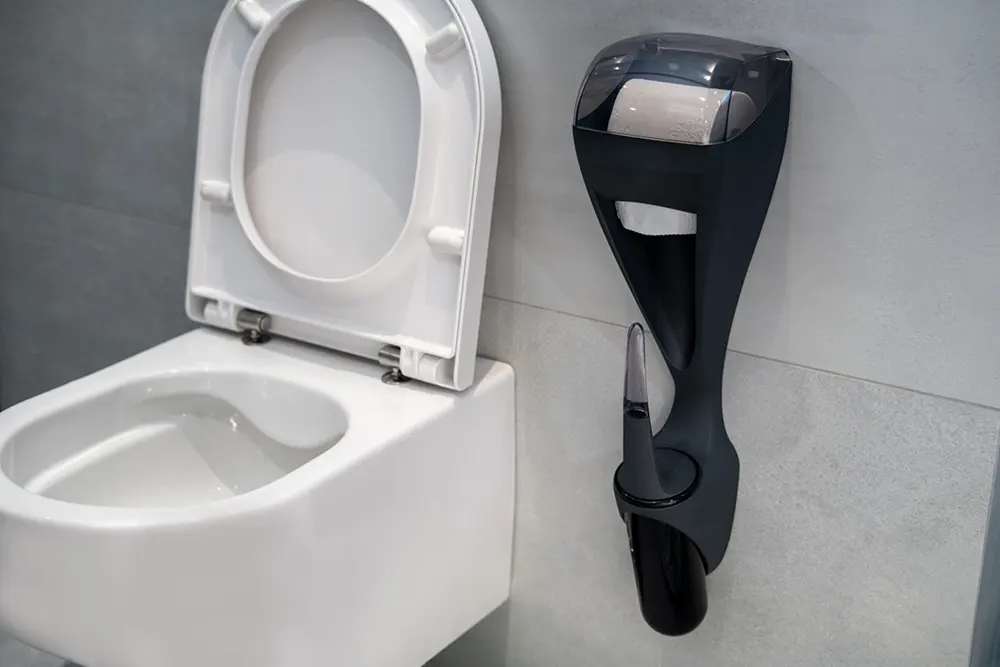
It is time to move to the right dispenser system
If the same symptom returns, if refills “intercept” the peak, or if consumption rises without a better impression, you do not have a fault but a pattern. At that moment, the smartest move is to replace the dispenser and switch to a system that follows your zone, throughput and working conditions. A correctly paired dispenser works unobtrusively, removes micro-stoppages, lowers consumption and restores a calm rhythm to the shift. You see it immediately on a floor that stays dry, on a front without paper “feathers”, in a budget that is not wasted, and in user ratings that rise instead of justifying apologies.
You are not choosing “just another box”, but a tool that safeguards the workflow every day. Electronic or mechanical, foam or liquid, jumbo roll, sheet or centre-pull, ABS housing and standardised service—when everything is aligned by zone, the dispenser becomes an ally of hygiene and operations.
If you want us to translate this into concrete steps for your facility, Luu can perform an expert on-site assessment and deliver a clear plan for replacement, capacity and standardisation without closing the restroom. Call +381 66 811 83 82 and you will receive a solution that works in every shift, without exception.
Subscribe to the newsletter; once a month we send short tips for choosing and maintaining dispensers, with clear steps and real savings.
Enter your email and get what you can apply right away.

